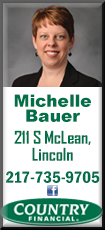|
 Real U.S. drug prices, which includes discounts and rebates
drugmakers provide to insurers and pharmacy benefit managers (PBMs),
fell 5.8 percent in the quarter, compared with a 0.7 percent
increase a year earlier, SSR analyst Richard Evans said in a
research note on Tuesday. That is in line with how far prices fell
in the first quarter, he said. Real U.S. drug prices, which includes discounts and rebates
drugmakers provide to insurers and pharmacy benefit managers (PBMs),
fell 5.8 percent in the quarter, compared with a 0.7 percent
increase a year earlier, SSR analyst Richard Evans said in a
research note on Tuesday. That is in line with how far prices fell
in the first quarter, he said.
Lower "real" drug prices means drugmakers are receiving less revenue
on sales, but does not necessarily translate into savings for
patients as employers and payers are more likely to reap the
benefit.
Evans believes "copay accumulator" programs, which effectively force
drug companies to continue to assist patients with their copays,
were to blame for the declining real drug prices.
"Unless manufacturers adapt their copay support programs fairly
drastically, net price declines may worsen in 2019," Evans said.

Gilead Sciences Inc, Eli Lilly and Co, Novo Nordisk and
GlaxoSmithKline Plc made the largest contribution to the real drug
price decline in the quarter, according to the report.
"We continue to assess the impact of accumulators being offered in
the health insurance market," GSK spokeswoman Ashley Mahoney said in
an email, adding that the British drugmaker has faced pricing
pressure in the U.S. market, particularly for its respiratory
therapies.
In recent years, insurers have tried to guide patients toward less
expensive treatments by making them pay a higher portion of a drug's
costs. Drugmakers responded by raising the financial aid they offer
in the form of "copay assistance" cards - similar to a debit card -
that reduce consumer costs at the pharmacy.
[to top of second column] |

PBMs, which manage prescription drug coverage for large U.S.
employers, say these payments shield consumers from drug costs,
making it easier for manufacturers to raise prices. Insurers have to
make up the difference.
Many PBMs introduced the copay accumulator approach for their
corporate customers this year. The programs prevent copay card funds
from counting toward a patient's required out-of-pocket spending
before insurance kicks in on expensive specialty drugs.
Major pharmaceutical companies are trying to limit the damage from
the tactic.
Still, most large drug companies did not address the issue of copay
accumulators during conference calls to review second quarter
results. Amgen Inc and Eli Lilly played down the effect the programs
were having their own bottom lines.
Evans said he believes more employers will add the programs next
year. A recent survey of large corporate employers by the National
Business Group on Health showed that around 25 percent of
respondents already had copay accumulator programs in place, and
another 3 percent will be adding them next year. An additional 21
percent is considering the programs for 2020 or 2021, the survey
found.
Representatives for Gilead, Eli Lilly and Novo Nordisk could not be
immediately reached for comment.
(Reporting by Michael Erman and Caroline Humer; editing by Bill
Berkrot)
[© 2018 Thomson Reuters. All rights
reserved.] Copyright 2018 Reuters. All rights reserved. This material may not be published,
broadcast, rewritten or redistributed.
Thompson Reuters is solely responsible for this content.
 |